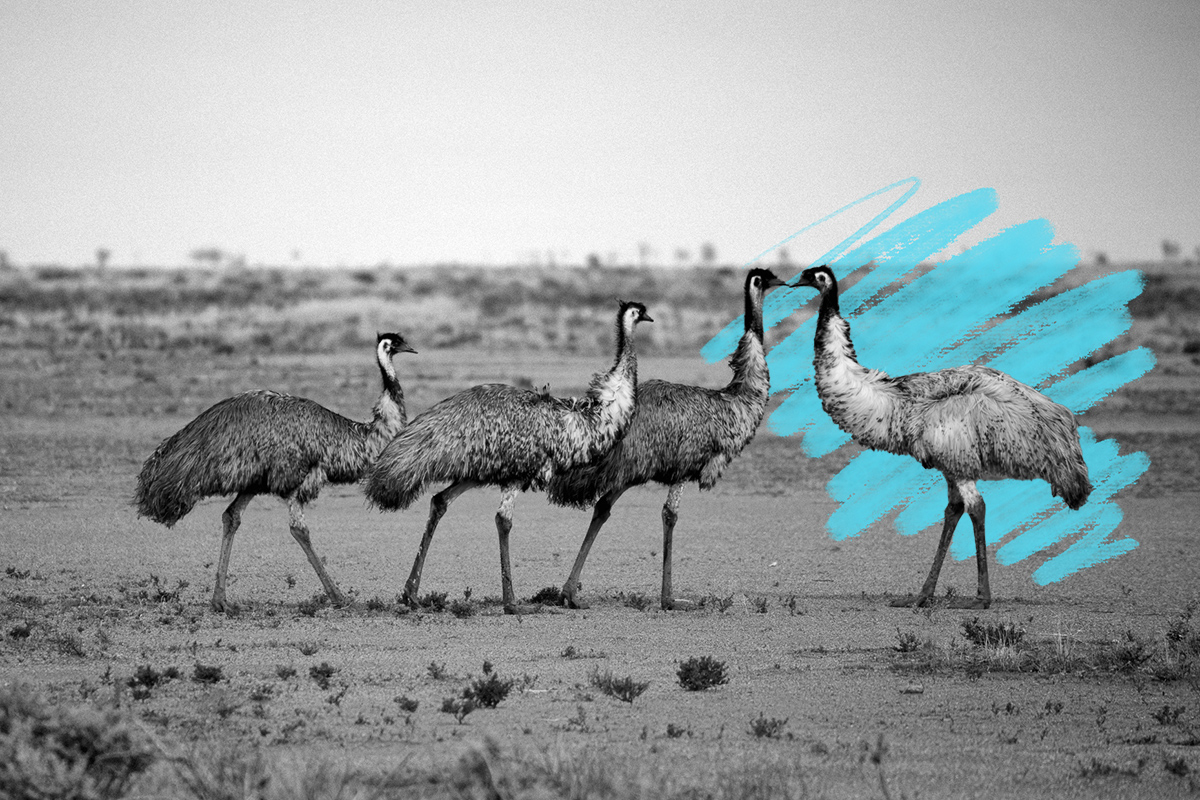In 1932, Australia declared a “war” against emus (and lost).
Australia is known for its unique wildlife, not all of which is friendly. In 1932, the country received a harsh reminder of that when a drought caused some 20,000 emus to move inland in search of water during their breeding season, disrupting farmers’ crops in the process. The ostrich-like birds had already had their classification downgraded from “native species” to “vermin” despite being endemic to Australia and appearing on its coat of arms alongside the kangaroo, and this mass migration made them public enemy No. 1. The government sent in World War I veterans to assist the beleaguered farmers, and though they were outfitted with machine guns, they soon found themselves overwhelmed by their flightless foes. Emus are fairly imposing, to be fair — among all bird species, only ostriches and cassowaries are larger.
“The machine-gunners’ dreams of point-blank fire into serried masses of Emus were soon dissipated,” observed D.L. Serventy, an Australian ornithologist. “The Emu command had evidently ordered guerrilla tactics, and its unwieldy army soon split up into innumerable small units that made use of the military equipment uneconomic. A crestfallen field force therefore withdrew from the combat area after about a month.” In other words, the emus emerged victorious in what’s now known as the Great Emu War. The birds were simply too much trouble to get rid of, and though they suffered heavy casualties, they still thrive Down Under.















